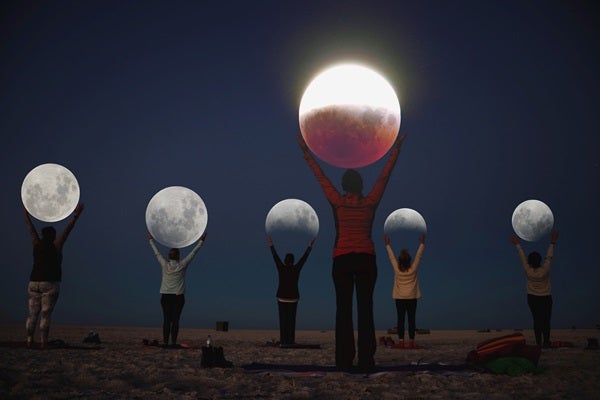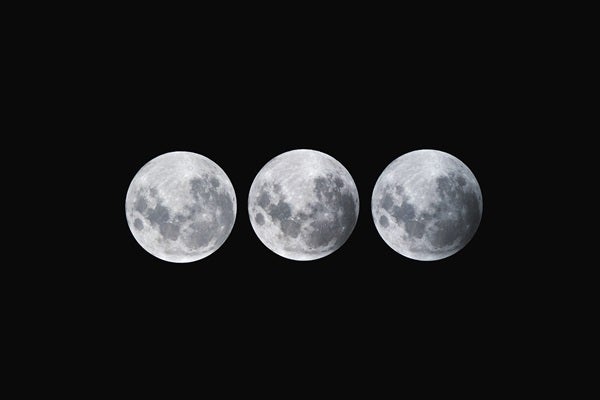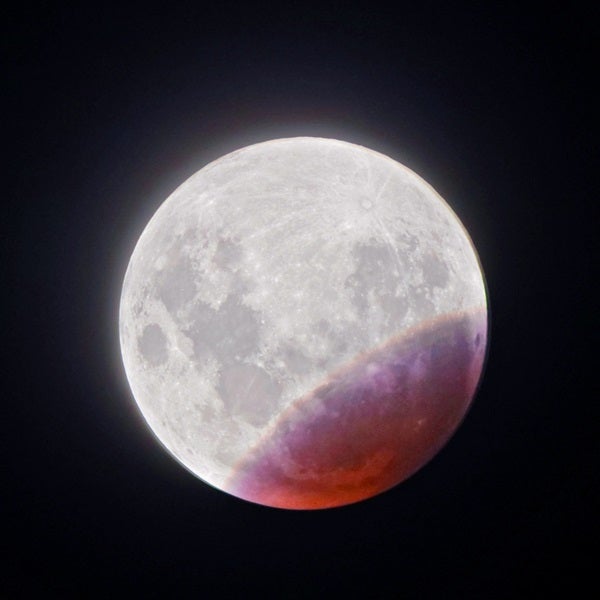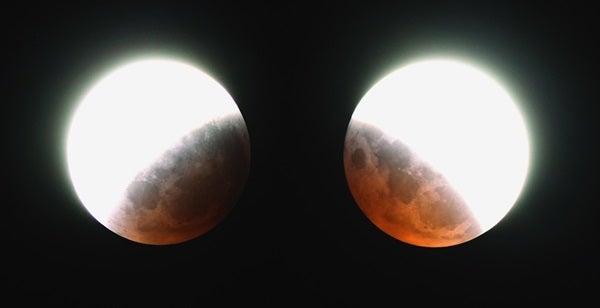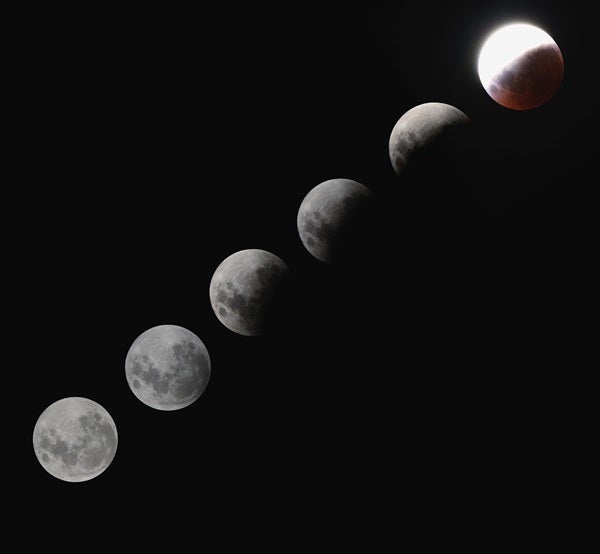Penumbral differences
I was particularly surprised by how difficult it was to perceive Earth’s penumbra (its lighter outer shadow) during the early stages of this 65-percent partial eclipse. The brilliance of the Full Moon is formidable through an 8-inch telescope without a filter. And although I knew some penumbral phases of partial eclipses go unseen, the shadow’s smoky yellow presence made itself obvious only about 25 minutes prior to the appearance of Earth’s umbra (its darker inner shadow), or about 70 percent into the penumbral phase.
While this is within the norm, I found the situation during the shadow’s egress different. Namely, I found it much easier to follow the penumbra’s departure almost to the Moon’s edge. My guess is that it is easier to follow something dark becoming lighter (because your eye and brain can gradually accustom to the brightening shadow) than something overpoweringly bright becoming partially dimmed.
Umbral irregularities
For the first five minutes after Earth’s umbral shadow slipped onto the lunar disk, it appeared as a small semicircular dark path surrounded by a dark gray aureole. Five minutes later, the central dark patch and aureole reversed intensities, with the core appearing brighter than its surrounding ring. Another five minutes into the event, and the entire umbral shadow was a uniform dark gray surrounded by an equally uniform collar of lighter gray. The reverse-Life Saver effect was a mystery, though I believe it to be a contrast effect between the bright highlands and the dark maria as the shadow moved over the region.
There was also something else at play, which made it difficult to judge the overall intensity of the shadow’s color. In Image 3, note how the southern highlands (at the top) appear so much brighter than the remainder of the disk in shadow. This is not due to irregularities in Earth’s atmosphere, but rather due to albedo effect. Lunar highlands reflect twice as much light as the darker maria, which dominate the shadowed region.
One other aspect of the eclipse surprised me. To my naked eyes and through binoculars, the edge of the Moon’s shadow appeared irregular (a contrast illusion created as the shadow covers the irregular boundaries of the maria), as you can see in Image 5 taken through a 3-inch telescope at prime focus. Through the 8-inch, however, the shadow’s edge remained smooth throughout the eclipse, as it should.
Send your thoughts on any lunar eclipse to sjomeara31@gmail.com.

